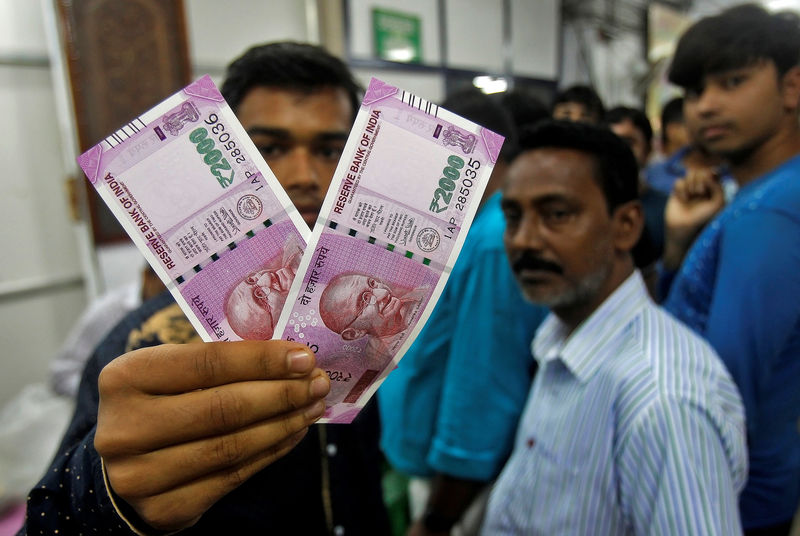Investing.com’s stocks of the week
Investing.com-- Most Asian currencies were subdued on Friday, with South Korean won leading losses ahead of key U.S. jobs data, while the Indian rupee was slightly higher after the country's central bank held rates steady but cut bank reserve requirements.
The Reserve Bank of India kept benchmark interest rates unchanged, as expected on Friday, but cut its cash reserve ratio requirement for local banks.
The central bank also lowered its economic growth projection for the current fiscal year and raised its inflation estimate.
Recent data has shown that the Indian economy was cooling after several quarters of stellar growth, while the inflation surged past the central bank's target range of 6%.
The Indian rupee's USD/INR pair was down 0.1% after RBI Governor Shaktikanta Das said the central bank will take more steps to attract foreign inflows and support the currency, after it hit a series of record lows through November and December. The pair hit a record high of over 84.8 rupees earlier this week.
An outsized cut by the Fed earlier this year had provided some leeway to Asian central banks to cut rates, but weakening domestic currencies, and inflation staying above target range in some economies, have pushed back expectations of near-term rate cuts.
The market consensus for Asia has moved towards fewer rate cuts, largely motivated by the Fed's actions, resulting in lower interest rate differentials for Asia versus the U.S., ING analysts said in a note.
"However, we think a combination of strong disinflation and slower growth will open up room for larger rate cuts than what the market is pricing in, especially for the Philippines, Singapore, India and perhaps Indonesia," they added.
S. Korean won set for worst week in 8 months amid calls to impeach president
The South Korean won's USD/KRW rose 0.5% on Friday. The pair was set to rise 1.8% this week, its biggest weekly rise since early-April, after President Yoon Suk-Yeol's failed attempt to impose martial law in the country.
In response, country's legislators called for impeachment of President Yoon. Even his own ruling party leader Han Dong-hoon said on Friday that Yoon must be removed from his position, to protect the nation.
The instability in South Korea dampened sentiment across Asia, given that the country is seen as a pillar of the East Asian economy.
The Singapore dollar's USD/SGD pair rose slightly, while the Australian dollar's AUD/USD pair fell 0.5% before a Reserve Bank of Australia meeting next week, where the central bank is expected to keep rates steady.
The Chinese yuan's onshore USD/CNY pair was largely unchanged ahead of China's annual Central Economic Work Conference (CEWC), due next week. Chinese inflation and trade data is also on tap.
The Japanese yen's USD/JPY pair was largely muted, while the Thai baht's USD/THB pair fell 0.3%.
Dollar steady with nonfarm payrolls, Fed in focus
The US Dollar Index and US Dollar Index Futures steadied in Asian trade, and were headed for a muted weekly performance.
Traders kept away from big bets on the dollar ahead of key nonfarm payrolls data due later in the day, which is likely to factor into the Fed’s plans for interest rates. Friday’s reading is expected to show a sharp rebound in payrolls through November, after a middling reading for October.
While the Fed is widely expected to cut interest rates by 25 basis points during a meeting later in December, traders have turned more uncertain over the long-term outlook for rates, especially in the face of expansionary policies under incoming President Donald Trump.
The Fed recently signaled that strength in the U.S. economy, as seen with a strong labor market, gave the central bank more headroom to consider future monetary easing.
